Discover Ukraine Online: Museums and Heritage Tours
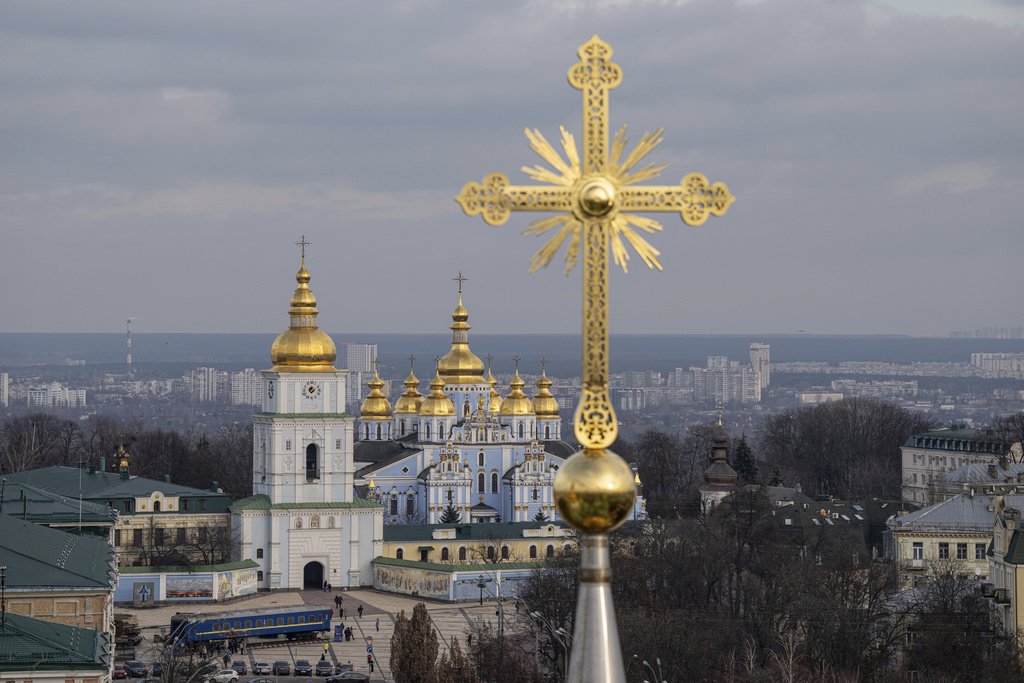
Ukrainian museums are gladly opening their doors to the world not only physically but also in the online space. From museum complexes of sacred significance to modern experimental spaces, virtual tours allow you to explore Ukrainian culture from anywhere in the world.
How can you explore Ukraine’s culture through online museums and virtual tours?
You can explore Ukraine’s culture and history through virtual tours of its most iconic museums — from the ancient Saint Sophia of Kyiv and St. Cyril’s Church to the Kharkiv Art Museum, the Chornobyl Museum, and the open-air heritage park in Pyrohiv. Discover centuries of art, faith, and resilience preserved online, and see how Ukraine safeguards its cultural soul even amid war.
Ukrainian culture has deep roots and remarkable diversity, which you can discover through online museums. This article gathers cultural institutions that offer free virtual tours. Each one allows for a deeper understanding of Ukrainian identity and brings you closer to its rich cultural heritage—all from the comfort of your home.
It’s a wonderful opportunity for anyone eager to discover Ukraine. Yet no screen can fully convey the atmosphere that comes from experiencing art and people in person. That’s why we invite you to explore Ukraine online and visit in person to see our culture in all its beauty and depth with your own eyes. Ukraine warmly awaits you!
In the meantime, let’s begin this online journey with a treasure at the heart of Kyiv—the majestic Saint Sophia of Kyiv.
The Museum of St. Sophia Cathedral: Witness of Millennia and Symbol of Resilience
Saint Sophia of Kyiv is one of the most significant monuments of world culture and a UNESCO World Heritage Site. In 2022, UNESCO added to the list of endangered sites due to Russian aggression against Ukraine, underscoring its global importance once again. Built in the distant 11th century, the cathedral became a symbol of statehood for Kyivan Rus, a spiritual stronghold, and a cultural center that continues to shape national identity to this day. Sophia has always been more than just a church—it was also a political and cultural hub. Here, princes were crowned, foreign envoys received, and the country’s fate decided.
The architectural vision of the cathedral aimed to put Kyiv on par with Constantinople, which was how Istanbul was called then: Saint Sophia of Kyiv was conceived as an answer to the magnificent Hagia Sophia.
For many years, the official date of the cathedral’s foundation was considered to be 1037, when, according to chronicles, Prince Yaroslav the Wise defeated the Pechenegs and, in honor of that victory, laid the foundation of the grand church. This version fit neatly into the political narratives of the Russian Empire and later the USSR, which sought to highlight Yaroslav’s role as a “gatherer of lands” and empire builder. However, recent research tells a different story: the true history of Sophia began earlier, under Prince Volodymyr the Great, the one who got Rus baptized. The cathedral’s foundation dates back to 1011, with completion around 1018. This is supported not only by chronicles and ancient Latin documents but also by thousand-year-old graffiti on the church walls, preserving the living voice of that era.
These graffiti are a unique phenomenon: more than 7,500 inscriptions and drawings made by clerics, princes, and ordinary Kyivans from the 11th to the 18th centuries. They recount victories and defeats, personal prayers, and the worries of people who came here seeking solace. This is a true chronicle of the people, carved in stone.
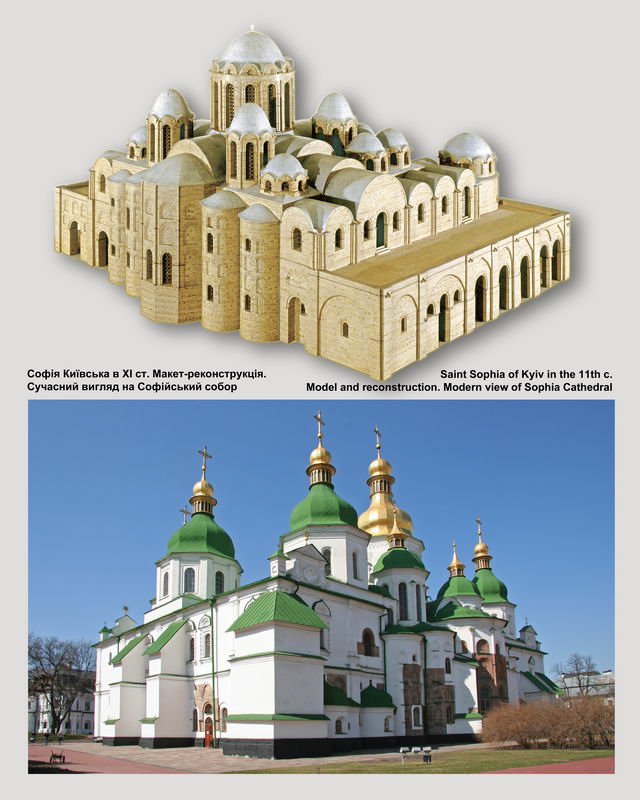
Originally, Saint Sophia of Kyiv was a vivid example of the Byzantine tradition, yet it developed its own distinctive style. The cathedral underwent several reconstructions, especially in the 17th–18th centuries under Metropolitans Petro Mohyla and Ivan Mazepa, who did everything possible to preserve this treasure for future generations.
Ukrainian National Chernobyl Museum: Memory of a Catastrophe
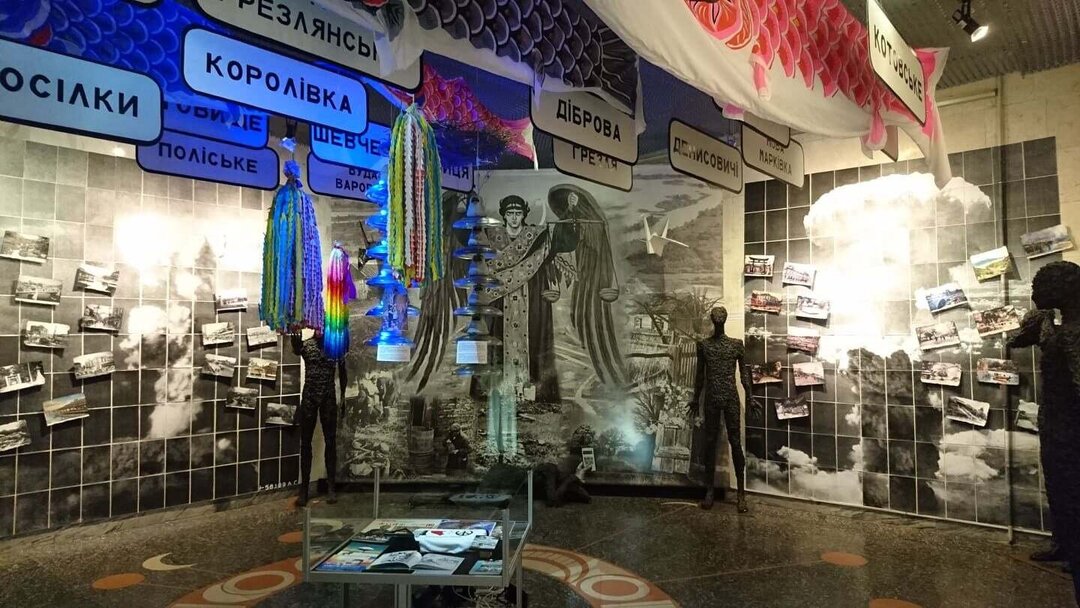
If you’ve played S.T.A.L.K.E.R. and S.T.A.L.K.E.R. 2, take the next step with a virtual tour of the Chornobyl Museum. This museum is not just walls and exhibits. It’s a place where every corner speaks of the tragedy that changed the world. Opened in 1992, the National Museum “Chornobyl” has become a kind of shrine of remembrance for the catastrophe that, on April 26, 1986, threatened the very existence of humanity.
Spread across more than 1,000 square meters of exhibition space, its three halls impress not only with their scale but also with their emotional depth. Over 22,000 items are on display: personal belongings of liquidators, documents, photographs, fragments of machinery, and artifacts from the exclusion zone. This is a place where you can see and feel that the Chornobyl tragedy is not just dry numbers but the fates of thousands of people.
The museum has an exceptionally important mission: to convey the truth about the disaster, dispel numerous myths, and show not only the pain but also the strength of spirit. It has evolved into a space for dialogue—where discussions extend beyond the past to the future of nuclear energy, nuclear safety, and governmental responsibility. It is a living laboratory of memory and research that brings together scholars, government delegations, tourists, and all who care about history.
Special attention is devoted to Chornobyl Polissia: ethnographic relics, household items, and religious symbols help visitors not only grasp what was lost but also appreciate the unique character of this region. The museum reminds us that the tragedy was not only a technological disaster but also the destruction of an entire cultural layer.
The National Museum “Chornobyl” is not just a remembrance of the past—it’s a warning for the future. It sounds the alarm so that catastrophes of such scale never happen again.
St. Cyril's Church: A Fortress of Faith and History
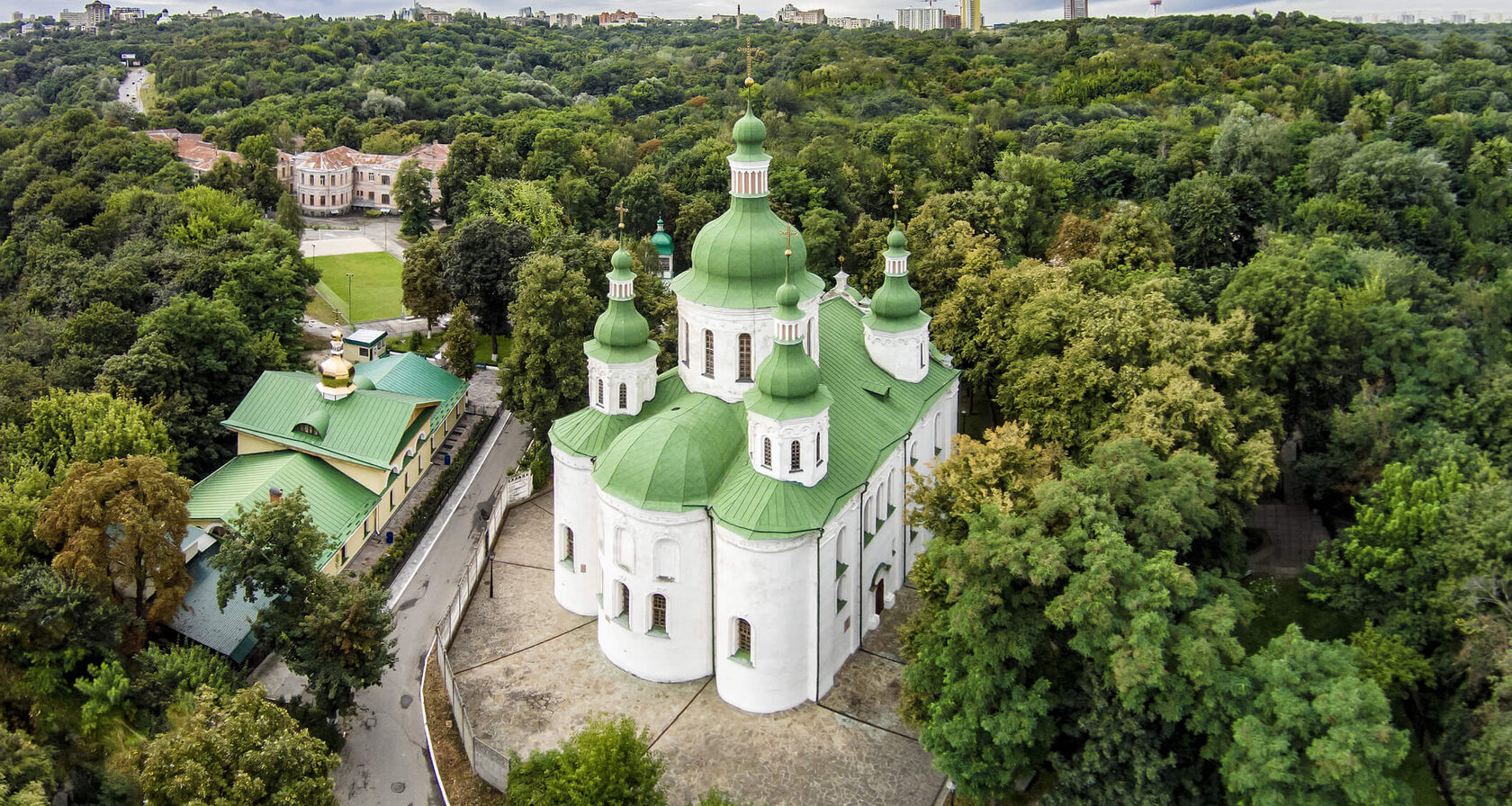 After Saint Sophia of Kyiv, St. Cyril's Church, is the second church in Kyiv that has survived from the distant times of Kyivan Rus. Founded in the 12th century by Prince Vsevolod Olhovych in the strategically important Dorohovychi area, it served not only a sacred purpose but also a defensive one. This was a key site from which numerous invaders launched assaults on Kyiv, leading to bloody battles with the city's princes. Built as a family church-mausoleum for the Olhovych dynasty and dedicated to Saint Cyril of Alexandria, the structure combined features of both a church and a fortress, reflecting Kyiv’s turbulent history.
After Saint Sophia of Kyiv, St. Cyril's Church, is the second church in Kyiv that has survived from the distant times of Kyivan Rus. Founded in the 12th century by Prince Vsevolod Olhovych in the strategically important Dorohovychi area, it served not only a sacred purpose but also a defensive one. This was a key site from which numerous invaders launched assaults on Kyiv, leading to bloody battles with the city's princes. Built as a family church-mausoleum for the Olhovych dynasty and dedicated to Saint Cyril of Alexandria, the structure combined features of both a church and a fortress, reflecting Kyiv’s turbulent history.
The church survived the Mongol invasion, destruction, fires, numerous restorations, and even conversion into a hospital church in the 18th century. Its restoration in the 17th century, under the patronage of Konstantyn-Vasyl Ostrozky, and the subsequent care of prominent abbots solidified its importance among Orthodox shrines.
The church amazes visitors with 800 square meters of 12th-century frescoes—a unique example of Old Rus monumental painting. These were later supplemented in the 19th century during restoration work, when the renowned artist Mikhail Vrubel was invited to contribute. In 1884, Vrubel created remarkable frescoes, among which the composition “The Descent of the Holy Spirit upon the Apostles” stands out, located on the second floor. In addition to the frescoes, Vrubel also painted icons for the marble iconostasis, including “The Virgin and Child.”
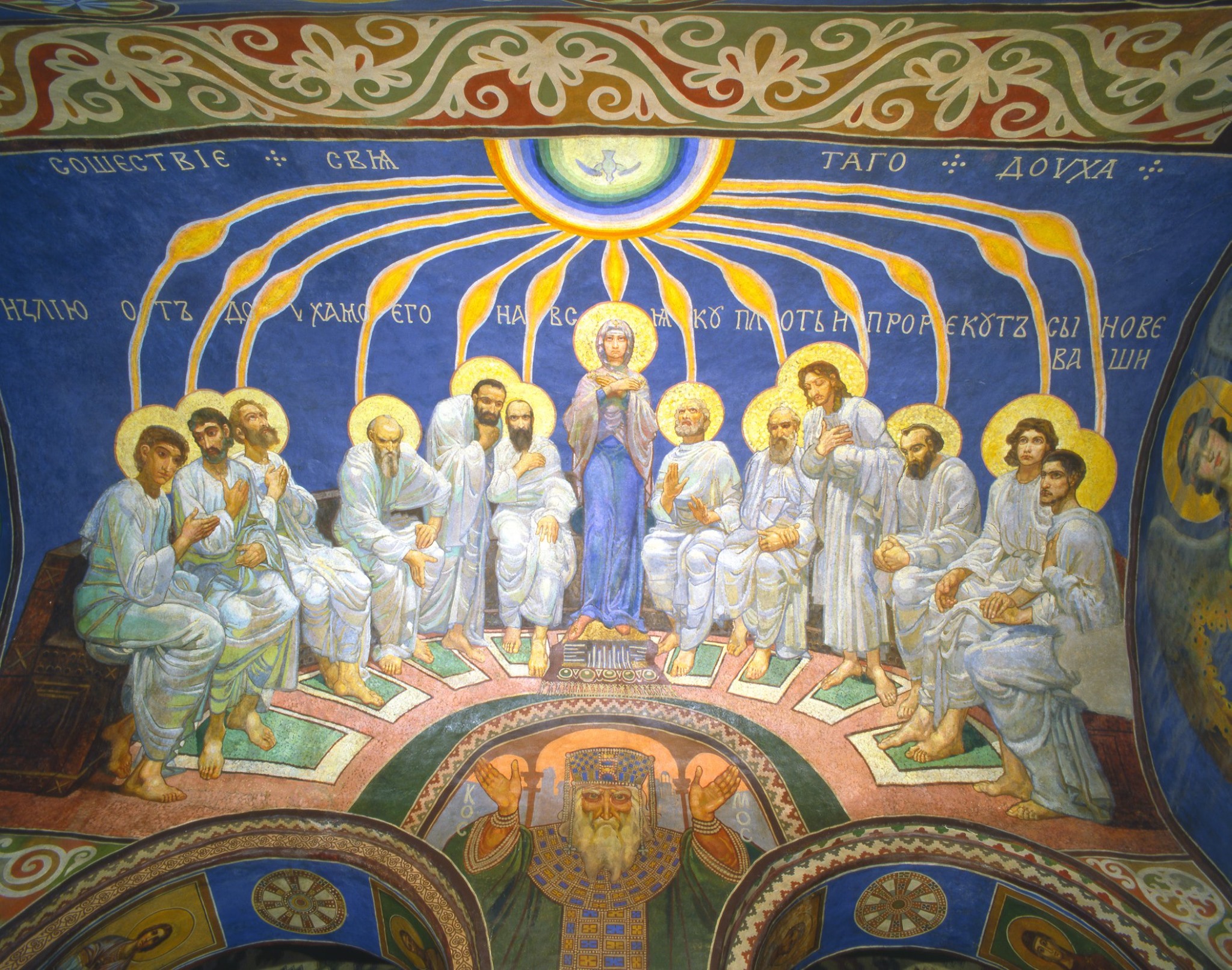 Descent of the Holy Spirit upon the Apostles by Mikhail Vrubel (1856–1910)
Descent of the Holy Spirit upon the Apostles by Mikhail Vrubel (1856–1910)
Many sacred cultural landmarks of Ukraine were destroyed by Soviet authorities. However, St. Cyril's Church was saved when, in 1929, it was declared a state museum-reserve.
Today, St. Cyril's Church combines both museum and religious functions: regular services are held here, alongside ongoing scientific research and restoration work.
Kharkiv Art Museum: A Symbol of Ukrainian Cultural Resilience
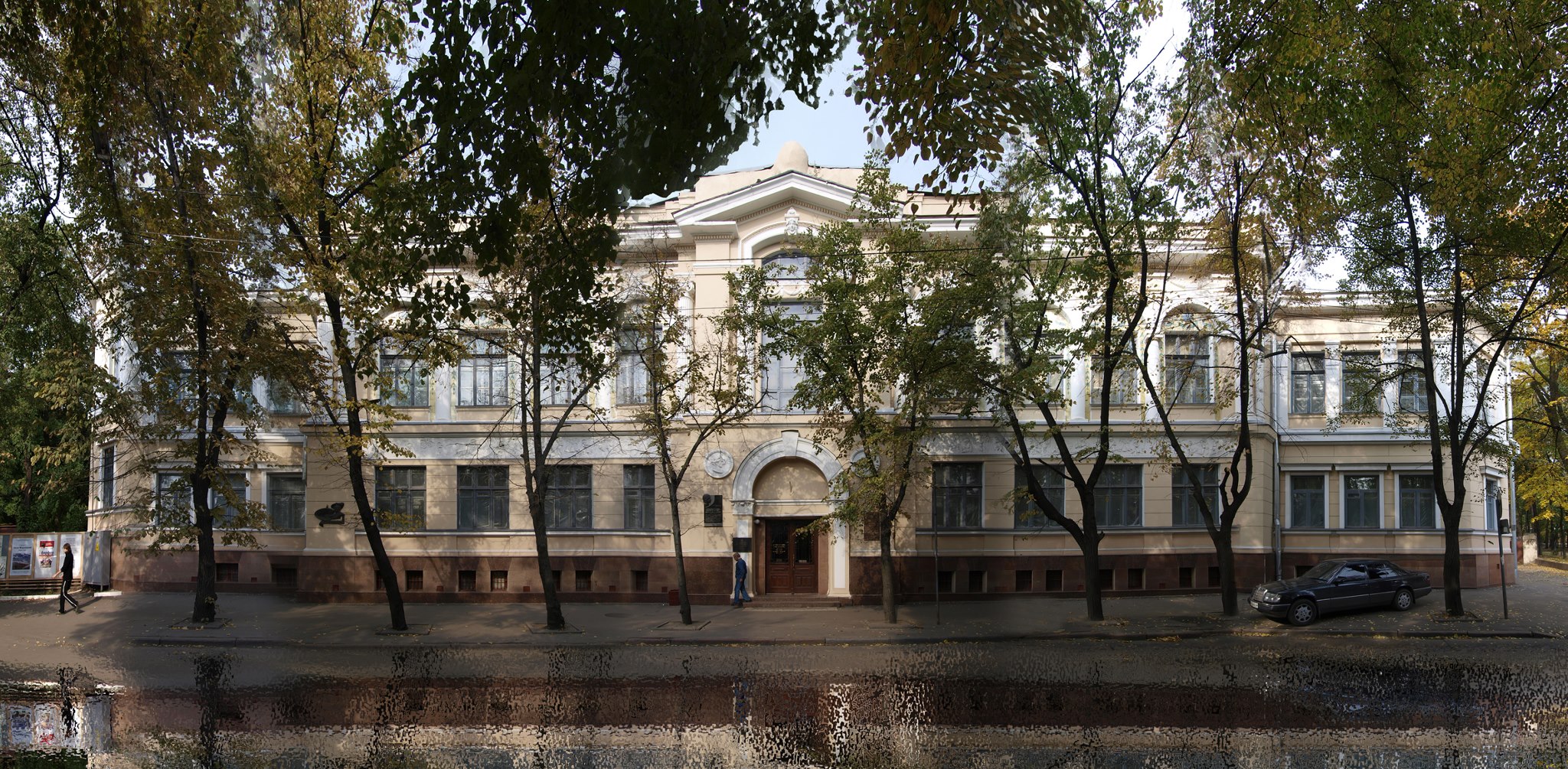
The history of the Kharkiv Art Museum is a testament to how culture becomes a bastion of humanity even in the darkest times.
This museum is not only one of Ukraine’s most significant art collections but also an architectural landmark that embodies key chapters of the city’s history. Its story began back in 1805 thanks to Vasyl Karazin, who initiated the art collection by acquiring about 2,500 graphic works by Western European masters, including pieces by Albrecht Dürer, Pieter Bruegel the Elder, Anthony van Dyck, and François Boucher.
Over the years, the collection expanded thanks to university graduates, enriched with works by 17th–18th century artists and more than 3,000 engravings from various European schools. By the onset of World War II, the museum held over 75,000 exhibits and was considered one of the best art collections in the USSR. It included works not only by European artists but also by Ukrainian and Russian painters such as Illia Repin, Taras Shevchenko, Serhiy Vasylkivsky, Ivan Shishkin, and Hryhoriy Myasoiedov.
However, the war dealt a devastating blow. The Soviet authorities did not include the museum in evacuation plans, so only 6% of the most valuable exhibits were transported abroad. The rest of the collection was either looted by the Nazis or destroyed during their retreat from Kharkiv in 1943.
The history of the museum building is no less interesting. It’s a Neo-Renaissance mansion with elements of Art Nouveau—a typical example of late 19th–early 20th century architecture. Over the years, the building housed Soviet institutions, and only after World War II, in 1944, did the art museum gain a permanent home here.
For nearly 80 years, the museum grew and recovered, becoming a treasure trove of European and Ukrainian art with over 25,000 exhibits spanning the 15th–21st centuries. Architectural gems of the building include caryatids with female heads on the façade, early 20th-century stained glass, and a fireplace in the mansion’s former dining room.
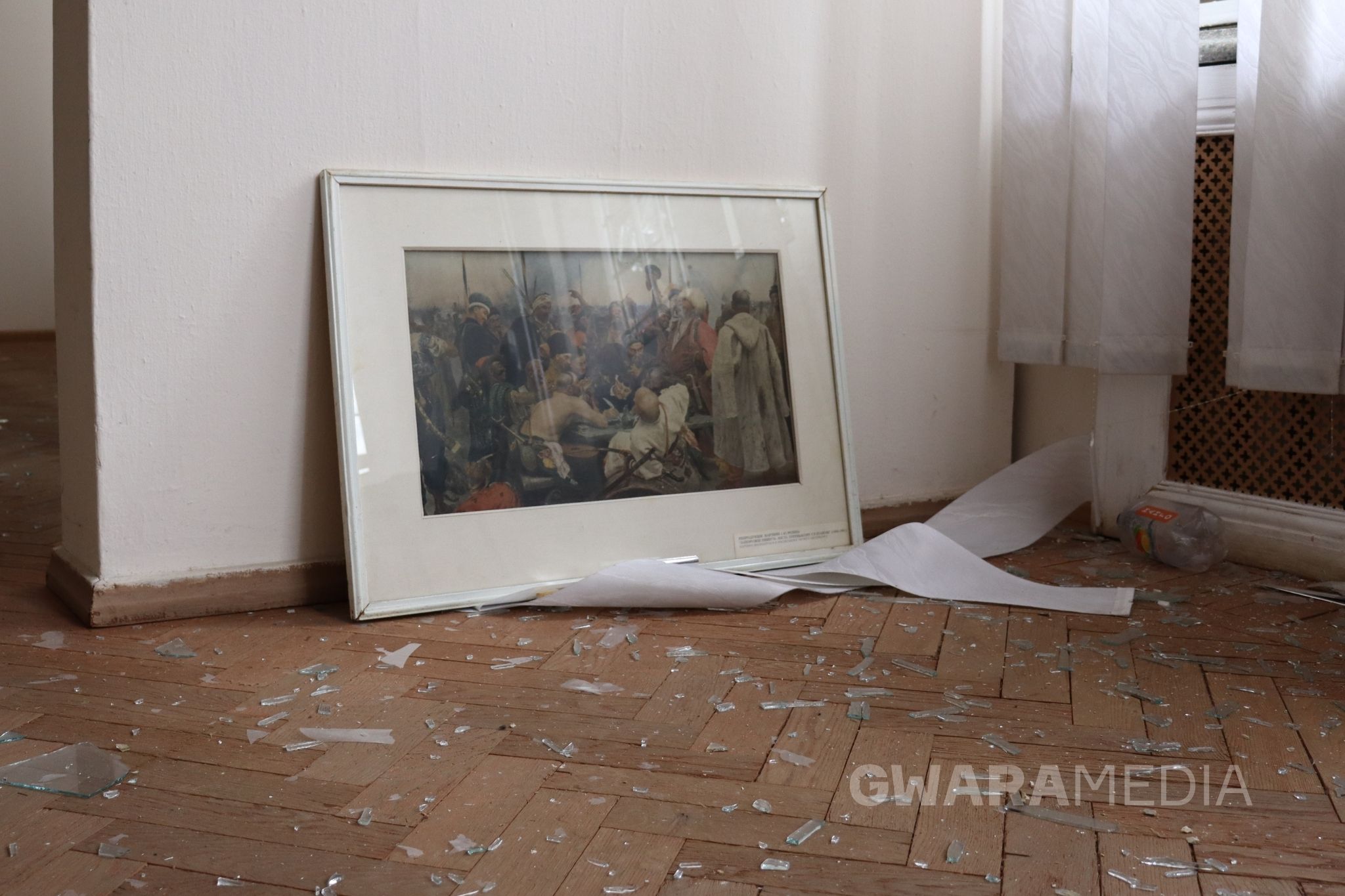
Photo: Gwara Media
In February 2022, the museum once again found itself at the epicenter of war—this time due to Russia’s full-scale invasion. During shelling in Kharkiv, the building sustained damage: façades, windows, and stained glass were affected. As 80 years ago, the museum’s staff are doing everything possible to save the priceless exhibits.
A place that has always been a window to the world of beauty and culture is now forced to fight for its existence. However, in the virtual tour, you can see the museum as it was before the damage from Russian missiles and enjoy the best pieces of its collection, which are now safely preserved.
National Museum of Folk Architecture and Life of Ukraine: Living History in the Open Air
National Museum of Folk Architecture and Life of Ukraine, is the largest open-air museum (skansen) in Europe, spanning over 131 hectares and presenting the most comprehensive ethnographic collection of Ukraine, is a true treasure trove of Ukrainian heritage nestled on the picturesque hills of Kyiv.
The museum was founded on February 6, 1969, through the efforts of the public and the Ukrainian Society for the Protection of Historical and Cultural Monuments. Since then, it has become not only a center for preserving tangible heritage but also an important hub for researching and promoting folk culture.
A virtual tour of the museum can literally transport you back in time, as you stroll among authentic structures where Ukrainians lived from the 16th to the 20th centuries. But after your online visit, be sure to come to Kyiv in person: festivals, fairs, and workshops are regularly held here, immersing visitors in living folk culture and offering a deeper understanding of Ukraine’s history.
Each exhibit in the museum is an original structure relocated from different parts of the country. The museum’s uniqueness lies in its architectural ensemble, which covers all historical and ethnographic regions: Central Dnipro Region, Poltava Region, Polissia, the Carpathians, Southern Ukraine, Slobozhanshchyna, and even a reconstruction of a village from the 1960s–1970s. The museum’s oldest monument is a hut from the village of Samary, Volyn Region, dating back to 1587.

Among the numerous objects, particular attention is drawn to the mills (wind and water), blacksmith shops, village councils, church-parish schools, craftsmen’s and priests’ cottages, old taverns, granaries, barns, and many other household structures. While the building types were similar throughout Ukraine, each region has its own architectural features shaped by natural conditions and local traditions.
These authentic architectural complexes not only recreate the daily life of our ancestors but also help us grasp the depth of cultural memory. The museum holds exceptional significance as a place where Ukrainians can feel a deep connection across generations, and foreigners can appreciate the uniqueness of our national identity.
Interestingly, this very location inspired Richard Bachynsky Hoover to create the historical drama Bitter Harvest about the Holodomor (https://www.nytimes.com/2017/02/23/movies/bitter-harvest-review.html). He wrote the script after visiting the museum in 1999, and the film was shot in Ukraine in 2013. It became the first large-scale English-language feature film depicting the Holodomor tragedy, aiming to bring this painful chapter of history to the global audience.
Ivan Honchar Museum: From an Underground Hub to a National Cultural Center

The Ivan Honchar Museum National Centre of Folk Culture serves as a bridge between traditional folk culture and modern society, revealing the deep layers of Ukrainian identity to its visitors. Its history is closely linked to Ivan Honchar himself—a painter, sculptor, and ethnographer who was passionately devoted to preserving and promoting Ukrainian heritage.
In 1959, Honchar began opening his private collection of antiquities to the public, amassed through numerous expeditions to Ukrainian villages. During the Khrushchev "thaw," this was an extraordinary and even risky gesture—interest in Ukrainian national heritage always raised suspicion under the totalitarian regime. Honchar’s museum, operating literally out of his home, became a magnet for the generation of the “Sixtiers”—intellectuals who sought authentic meaning in the stifling atmosphere of Soviet conformism. This "underground" museum became a space of resistance, dialogue, and discovery—even under the watchful eye of the KGB and the constant threat of persecution.
Its exhibitions preserved and displayed rare examples of Ukrainian folk culture that were either ignored or outright banned by official institutions at the time. Honchar’s collection only began to receive recognition toward the late 1980s. However, the museum truly flourished after Ukraine gained independence.
Today, the museum’s collection includes over 27,000 exhibits—household items, folk costumes, embroidered towels, icons, wooden sculptures, musical instruments, old printed books, and other artifacts reflecting the rich traditions of different Ukrainian regions.
The Ivan Honchar Museum operates as a space for dialogue: it hosts exhibitions, seminars, workshops, concerts, and lectures. Special attention is given to programs for children and youth—the future bearers of cultural heritage. This is a place where visitors can not only see unique artifacts but also immerse themselves in living traditions—trying their hand at weaving, singing, and dancing as their ancestors did. The museum shapes a modern vision of folk culture as a foundation of national self-identification and a source of strength in times of historical challenges.
The Yosafat Kobrynskyi National Museum of Hutsulshchyna and Pokuttia Folk Art: The Heart of Carpathian Heritage in Kolomyia

This museum stands as a true symbol of preserving the identity and artistic uniqueness of the Ukrainian Carpathians. The Yosafat Kobrynskyi National Museum of Hutsulshchyna and Pokuttia Folk Art, Founded in 1926, it is located in the very heart of Kolomyia. From its inception, the museum has served as a key center for researching and promoting the folk art of the Hutsuls and Pokuttia communities.
The museum is also active in the digital space: as early as 2009, it launched a virtual tour, allowing visitors from anywhere in the world to experience the atmosphere of the Carpathian art world.
The museum’s collection features over 50,000 exhibits, covering all forms of folk art from the 17th century to the present day. Among its treasures are wooden sculptures, metal and leatherwork, pottery, textiles, carpets, embroidery, and traditional clothing. For example, the museum displays the famous Kosiv ceramics, which were inscribed on UNESCO’s Representative List of the Intangible Cultural Heritage of Humanity in 2019. The production technique of this pottery is so intricate and unique that it is virtually impossible to counterfeit.
The museum’s halls not only showcase the craftsmanship of past generations but also allow visitors to feel the living breath of history and see how the region’s artistic traditions have evolved. One of the museum’s rooms recreates the interior of a Hutsul house, offering a glimpse into authentic daily life, along with a display of musical instruments—most notably the trembita, which has become a symbol of Hutsul culture.
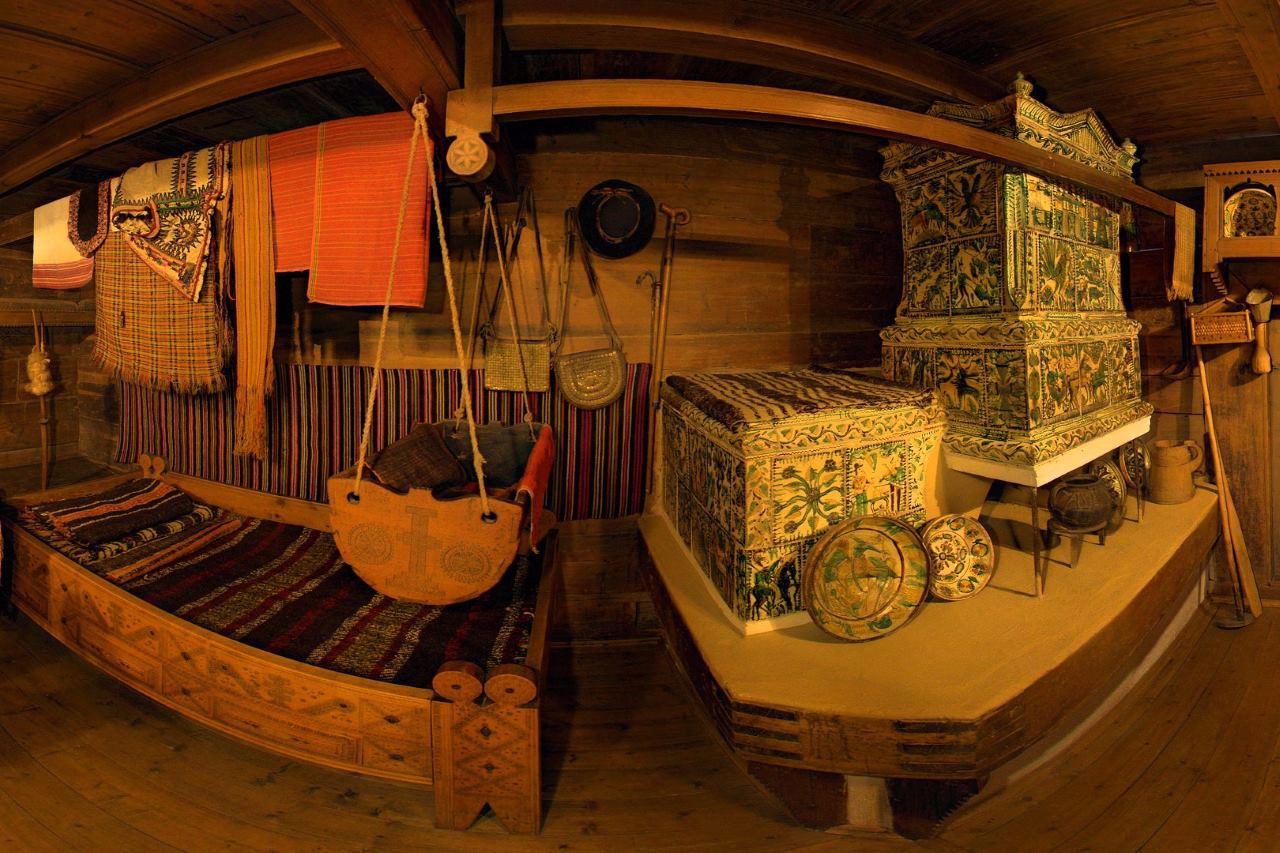
The museum’s development is closely tied to the political upheavals of the 20th century. From the Habsburg Empire to the Polish rule of the interwar period and the Soviet regime—each era imposed its own restrictions. The Polish authorities closed the museum several times, and Soviet ideologues carried out regular inspections, seeking grounds to repress staff and destroy exhibits. The year 1945 was particularly tragic: rare books, a sigillographic collection, and historical artifacts of great national importance were seized from the museum’s holdings. Despite these challenges, a significant part of the heritage was preserved.
As you can see, Ukrainian museums are not just about the past—they are also about the present and the future of a culture that continues to thrive despite adversity. Today, the digitization of Ukrainian cultural heritage is especially crucial, preserving it for future generations. Since the onset of Russia’s aggression against Ukraine, countless priceless monuments, museums, architectural sites, and archives have been threatened with destruction or damage.
Despite these challenges, digitization has become a vital tool in the fight to safeguard cultural values during the war. It offers a way not only to preserve objects for the future but also to maintain cultural dialogue, fostering international solidarity and understanding of Ukrainian culture on a global scale.
Yet no virtual tour can replace the live experience—the strolls down ancient streets, meeting people, and engaging directly with the authentic artistic environment. Plan your journey and discover the real Ukraine—a country where culture and art flourish against all odds.
Anastasiia Stepanenko, grant writer, project manager, cultural critic, expert at the United Ukraine Think Tank